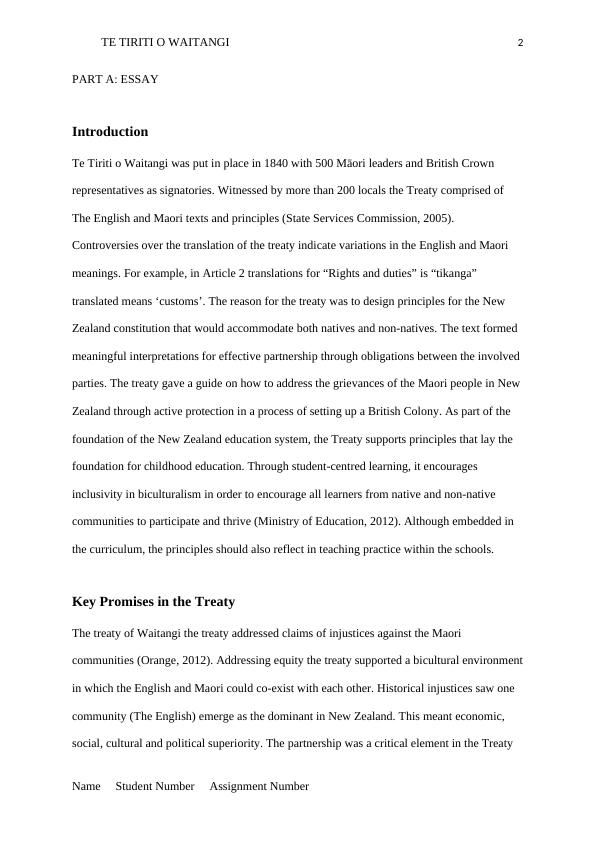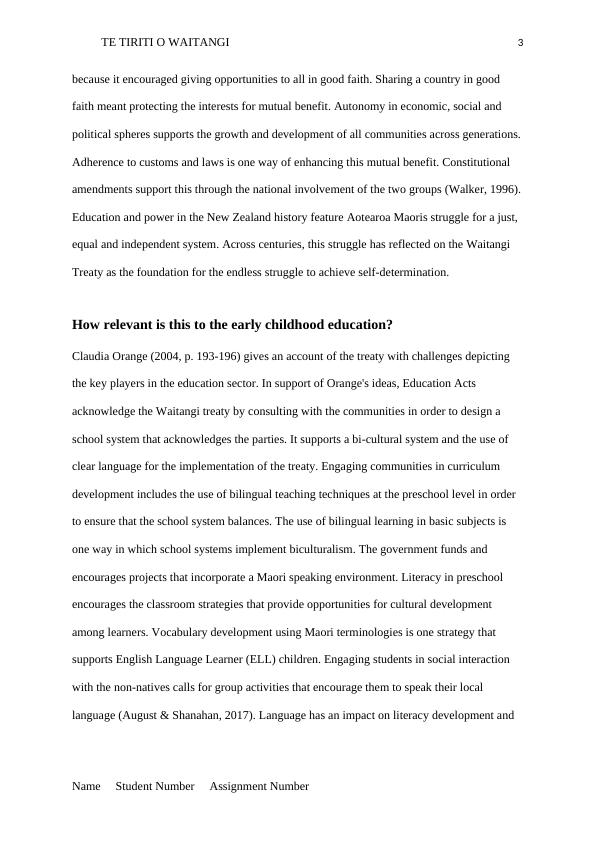The Treaty of Waitangi and Early Childhood Education
Summary: This reading discusses the Treaty of Waitangi and its significance in education in New Zealand. It explores the acknowledgment of Treaty rights in the Education Act of 1989 and the implementation of bicultural curricula and Maori language provision in schools. It also highlights the financial difficulties faced by pre-school kohanga reo and the efforts to enhance educational achievement for all learners, with a focus on the voices and stories of tangata whenua.
Added on 2023-06-12
About This Document
The Treaty of Waitangi and Early Childhood Education
Summary: This reading discusses the Treaty of Waitangi and its significance in education in New Zealand. It explores the acknowledgment of Treaty rights in the Education Act of 1989 and the implementation of bicultural curricula and Maori language provision in schools. It also highlights the financial difficulties faced by pre-school kohanga reo and the efforts to enhance educational achievement for all learners, with a focus on the voices and stories of tangata whenua.
Added on 2023-06-12
End of preview
Want to access all the pages? Upload your documents or become a member.



